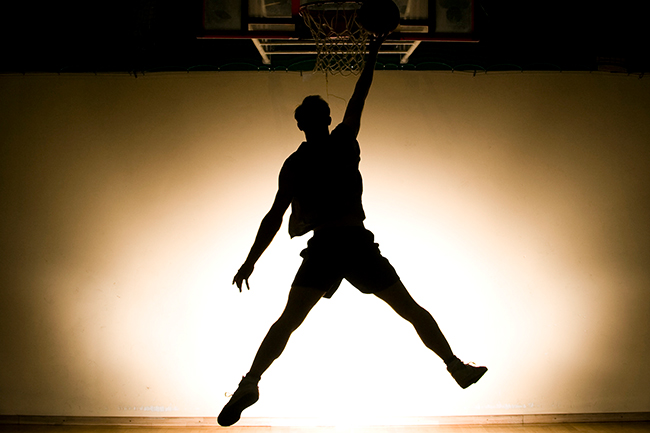On February 27, 2018 the Ninth Circuit ruled that Nike’s use of its iconic “Jumpman” logo did not infringe on copyrights to a 1984 image of Michael Jordan, as captured by photographer Jacobus Rentmeester. Following more than three years of litigation — and though the decision was split — Nike may continue to use the image without legal repercussions.
Rentmeester originally shot and used the image of Jordan in a mid-air, “grand jeté-inspired pose,” which was featured in a 1984 issue of Life magazine. Thereafter, Nike compensated Rentmeester for a limited license of the image, and then proceeded to hire a photographer to reinvent the snapshot. After the licensing period expired, and Rentmeester discovered that Nike had created its own jumping photo, Rentmeester threatened to sue. In response, and to ward off a suit that would not materialize until decades later, Nike paid Rentmeester to use the image for two more years, and again alleged that Nike continued to use it long after the agreed upon period expired. Rentmeester’s upset is not without reason: the Jordan brand apparently now brings in over $3.1 billion in revenue each year.
As we previously covered, the photographer filed suit in January 2015, stating that Nike’s 1987 creation of its “Jumpman” logo infringed on his copyrights as to the original photo, though solely limited to Nike’s conduct from 2012-15. In June 2015, the suit was dismissed for lack of similarity between the image and the photograph. Upon appeal in September 2015, the Ninth Circuit was tasked with revisiting the similarities, or lack thereof, and determining whether or not Nike would be able to continue using the image.
In determining that Nike’s “Jumpman” image did not unlawfully appropriate Rentmeester’s image, the court found that Rentmeester’s “photo [was] undoubtedly entitled to broad rather than thin protection” based on the fact that the “range of creative choices open to Rentmeester in producing [it] were exceptionally broad.” The court went on to reason that Rentmeester simply “cannot prohibit other photographers from taking their own photos of Jordan is a leaping, grand jeté-inspired pose.” Essentially, because Nike’s photo of Jordan substantially diverged from the scene created in Rentmeester’s photo, Nike’s subsequent use of the pose did not appropriate any protectable image.

